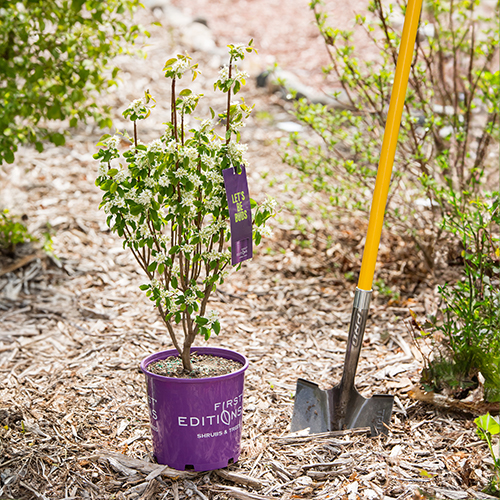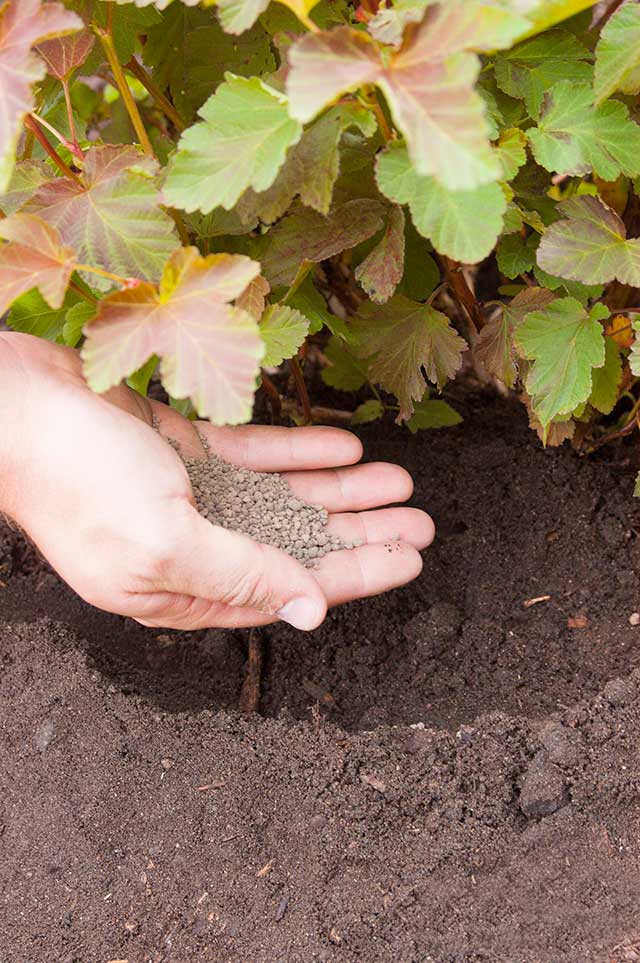First Editions® contains a wide array of shrubs, trees, roses, vines and perennial flowers in the collection and each variety grows best if cared for in a particular way. We highlight those recommendations in the plant descriptions but there are some important general guidelines all these plants benefit from.
Start by making a garden plan. Do you want more curb appeal, need a splash of color in a certain location, or do you want to replace tired old plants in your landscape? Determine the space you have available, how many plants you need and how much sun each location receives and draw up a garden plan. Knowing the conditions you are working with will help determine how much time and money you will be investing, and what varieties will work best in the space you have available.

Other than climate, soil is the most important naturally occurring aspect of plant growth. Making sure that your soil is properly prepared will affect the overall health of your plants and their long-term growth. Most plants prefer a rich loam soil with at least 5 percent organic matter, compost material also known as humus. This should be spread 2 – 6 inches deep across the entire bed and work it into the soil with a shovel or tiller.

Once you have prepared your soil, lay out the plants in your intended design. Be sure to keep in mind mature size of the plants, ensuring that they will barely touch at full size. This will make your garden look full and allow for air to circulate between the plants. Dig your planting hole slightly larger than the pot size, and place any fertilizer (see below), organic material or nutrients needed to improve your soil mix in the hole before putting your plants in place. If the roots are tightly packed, loosen them gently with your fingers before planting to encourage root growth and spread once in the ground.
For shrubs, make sure that the crown of the plant – where the base of the stems meets the soil – is even with the ground level. If the plant is placed too high, it can easily dry out. If the crown is placed too low when planting, it can cause the plant not to bloom and potentially rot. For trees, make sure that the root flare – where the trunk flares out to the root system – is even with the soil level. Refill the hole with soil and pack it firmly around the crown or root flare to create a water dam around the newly planted shrubs or trees. Fill the dam with water, let it drain and then refill it.
Landscape plantings will do best with a spring application of a simple, well balanced, slow-release fertilizer. We recommend a granular or spike-form fertilizer rather than water-soluble types, which are best used in small doses and mainly for container gardens. When applying fertilizer, follow the directions on the label, as over-fertilizing can damage the plants’ root systems. One exception is roses, which do well with monthly applications through mid-summer. As a rule of thumb, it is best to stop fertilizing trees and shrubs in late summer. If you are not sure what fertilizer to use as a professional at your local garden center. Be prepared to tell them what types of plants you want to fertilize, and they will be able to help select the proper product!


Watering is important for long-term growth and health and is especially important with newly planted shrubs and trees. Young root systems can easily dry out while they are getting established, so paying close attention is important. To determine if a plant needs watering, stick your finger in the soil to see how dry it is. Just because a plant is wilting does not mean that it needs water – it can sometimes be a sign of overly wet soil as well! When you water plants, it is best to give them a deep, thorough watering less often rather than watering lightly every day. A soaker hose is a great way to achieve this.
As plants grow and mature, you will not need to water as often. As a guide, if your garden does not get 1” of natural rainfall per week, you should check the soil and consider supplemental water with a deep soaking. A natural way to keep soil cool and prevent evaporation is to use a wood chip, bark or cocoa bean mulch.
Pruning is difficult to generalize because many different varieties have different pruning suggestions. As a rule of thumb, check the First Editions® catalog or website for each variety’s pruning requirements before starting. As an example, blooming shrubs should be pruned based on what time of year they bloom, and certain trees are susceptible to disease if pruned during the growing season. Look for the pruning icon located next to each plant’s description for specific directions.
If you live in an area with freezing temperatures, it is important for certain varieties to be covered and protected from the cold winter. Leaves, wood mulch and/or straw are great options to protect your plants. In the spring, do not remove the mulch too fast; wait until all danger of frost has passed before uncovering to ensure beautiful blooms from old and new wood. If your plant is in a container, bring the entire container into your garage or basement after it has gone dormant (when the plant loses its leaves in fall). Container plants will not require as much mulch, but should be lightly watered throughout the winter months since they will not receive moisture from snow and rain.